Fashion
Le Canned Dress
Irwin Silver put a dress in a can, gave it a frenchified name, and then sold these for $25 a pop. This was back in 1966, and it was a marketing gimmick about as cynical as you might guess. Silver was cashing in on the mid-1960s fad for anything canned, and he figured that if people were stupid enough to buy canned air (i.e. an empty can), perhaps they'd also buy a canned dress. Apparently he sold around 100,000 of them.More info from the St. Louis Post-Dispatch - Dec 14, 1966:
"I was being driven crazy by cans," he says. "Every time I turned around, I seemed to bump into a can. First I saw canned candles, then someone gave me a tin of canned air. I began to wonder why dresses couldn't be put up the same way."...
The fashions produced by Silver's company, Wippette, each weigh 4½ ounces, come packed in gay one-pound cans and are tagged with silver labels designed to look like the top of a can."

Image source: Cabinet magazine

St. Louis Post-Dispatch - Nov 26, 1966


Posted By: Alex - Tue Mar 28, 2017 -
Comments (4)
Category: Fashion, 1960s
Fish Bowl Fashion
Some examples of fish bowls (with live fish) incorporated into fashion:In 1954, Kathleen Radel created fish bowl earrings containing live guppies.
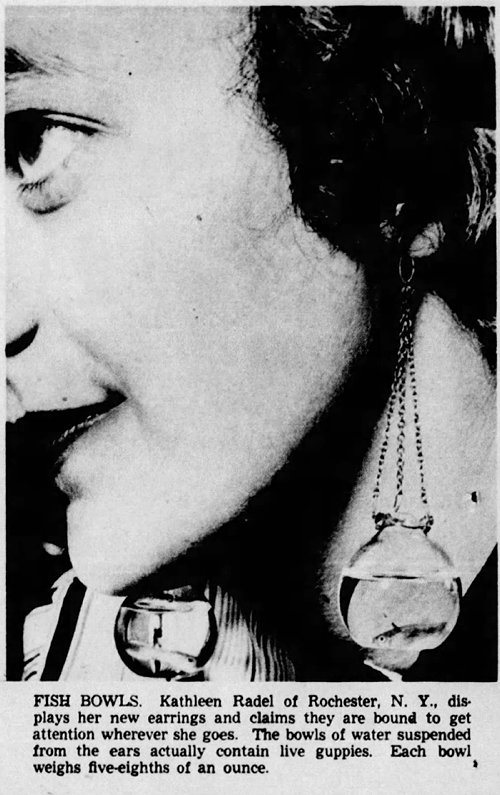
The Pittsburgh Press - Apr 4, 1954
More recently, London fashion designer Cassandra Verity Green included a goldfish handbag in her "Neptune's Daughter" collection of knitwear.
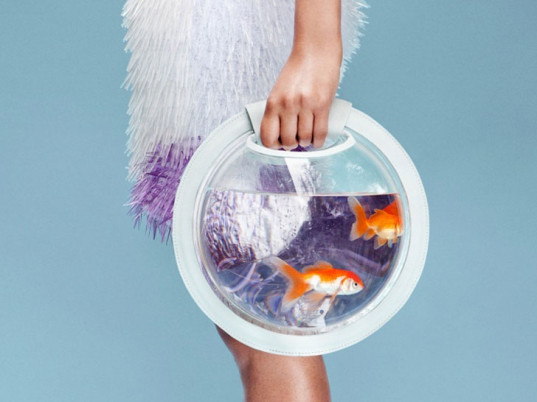
And finally, there's the Japanese artist Eijiro Miyama who's known for riding around on his bicycle wearing, among other things, fish bowl earrings that contain live goldfish.
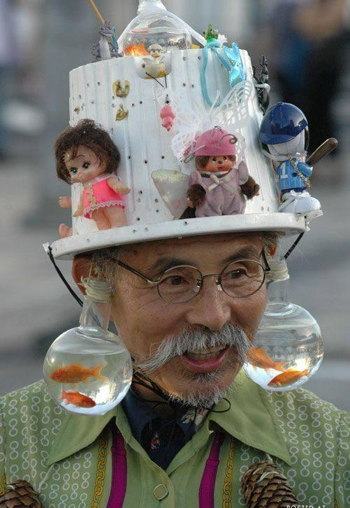
Posted By: Alex - Sun Feb 26, 2017 -
Comments (0)
Category: Fashion, Jewelry, 1950s
President Naa Hoo Woo of the USA
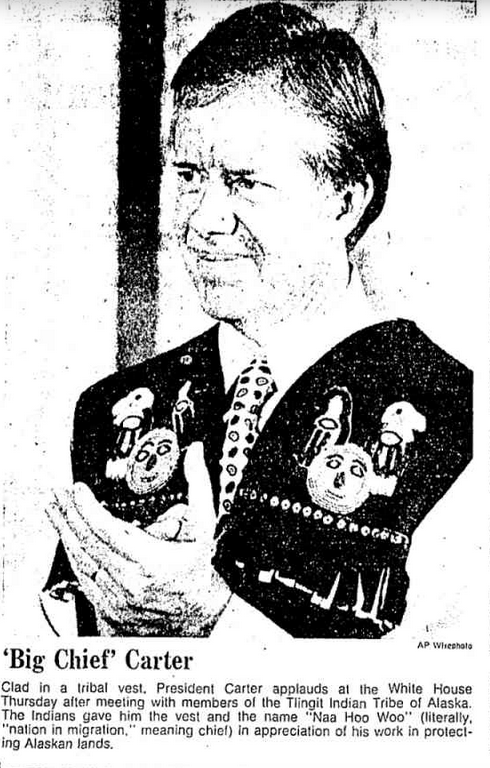
What a blatant instance of cultural appropriation!
Original foto here.
Posted By: Paul - Sun Feb 26, 2017 -
Comments (4)
Category: Fashion, Politics, Officials, 1970s, Native Americans
Giant Gown Folds Flat
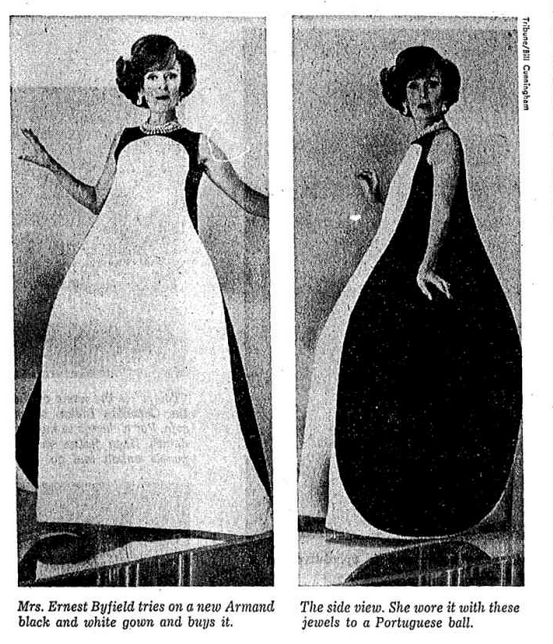
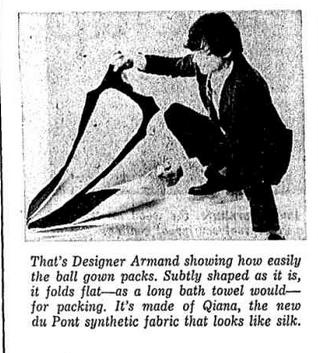
Original article here.
Posted By: Paul - Sun Feb 19, 2017 -
Comments (2)
Category: Excess, Overkill, Hyperbole and Too Much Is Not Enough, Fashion, 1960s
Ski masks for chilly cheeks
Almost as bad as styling on the slopes.
Source: Teenagers' Weekly - July 3, 1963
Posted By: Alex - Fri Feb 17, 2017 -
Comments (3)
Category: Fashion, Headgear, 1960s
The Paper Clothing Fad
Paper clothing — a fashion fad of the 1960s. It was disposable consumer culture taken to an extreme. Wear your clothes once or twice, and then just throw them away instead of washing them.Info from wikipedia:
By 1967, paper dresses were sold in major department stores for about $8 apiece, and entire paper clothing boutiques were set up by companies such as Abraham & Straus and I. Magnin. At the height of demand, Mars Hosiery made 100,000 dresses a week. Other items made of paper included underwear, men's vests, bridal gowns (expensive at $15), children's pinafores ("just the thing for ever-sprouting sprouts") and even rain coats and bikinis ("good for two to three wearings")...
But as the novelty appeal of paper clothes wore off, their downsides became more apparent: they were generally ill-fitting and uncomfortable to wear, their garish colors could rub off, they were often flammable, and of course they very soon ended up as waste. By 1968, paper clothing had disappeared from the market.
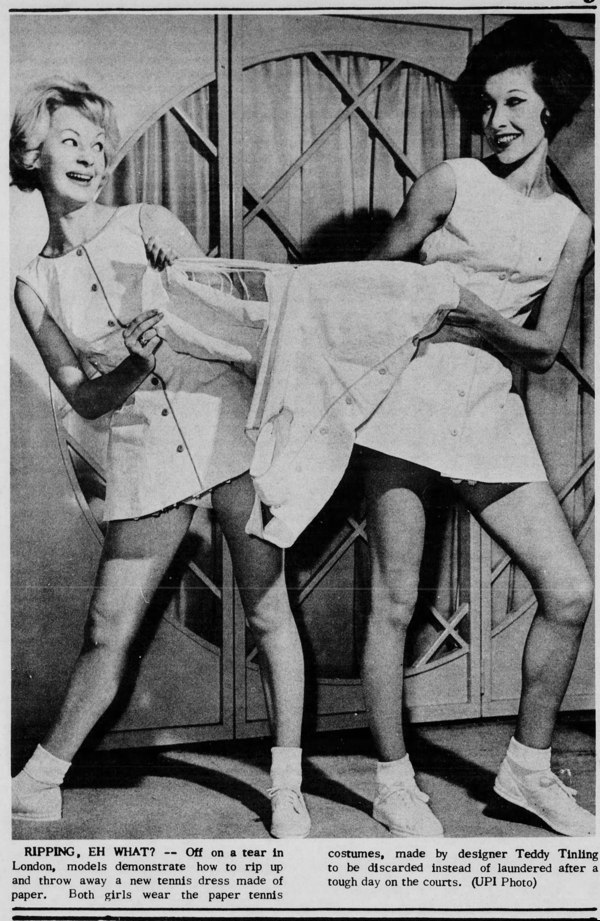
The Warren County Observer - Jan 24, 1961
Posted By: Alex - Tue Feb 14, 2017 -
Comments (8)
Category: Fashion, 1960s
Anti-Mosquito Leggings
I'm a bit surprised these anti-mosquito leggings never (to my knowledge) caught on, because if they actually worked then who cares if they looked dorky. Then again, I suppose DEET had already been discovered.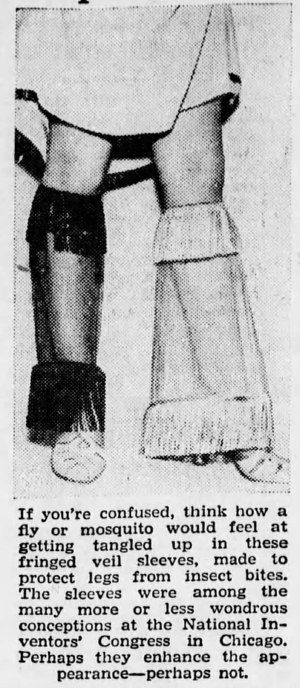
Danville Morning News - Apr 6, 1937

Pittsburgh Post-Gazette - Apr 1, 1937

Harrisburg Evening News - Apr 2, 1937
Posted By: Alex - Sun Feb 12, 2017 -
Comments (2)
Category: Fashion, Insects and Spiders, 1930s
Wool Nose Warmer
Introduced by the Hanover House mail order company in 1965.

St. Louis Post-Dispatch - Oct 3, 1965
Posted By: Alex - Thu Feb 09, 2017 -
Comments (12)
Category: Fashion, 1960s
Topless Hat
1960's fashion. Wear it down to cover up. Wear it up for the au naturel look.
The Cincinnati Enquirer - July 5, 1964
Posted By: Alex - Tue Feb 07, 2017 -
Comments (3)
Category: Fashion, Headgear, 1960s
Hey, Let’s Twist!
The movie so great it inspired its own line of Ivey, Jivey suits for Cats!
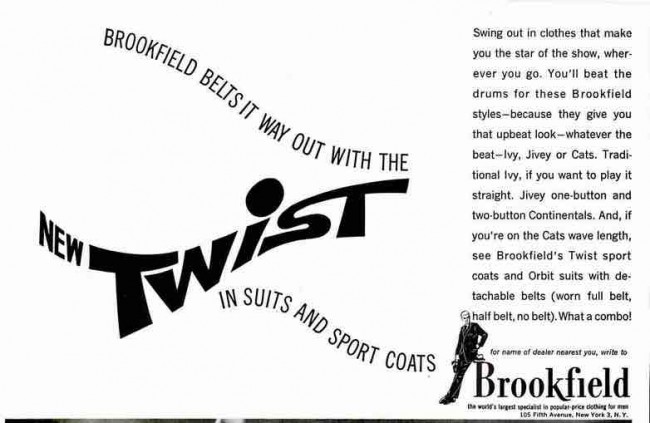
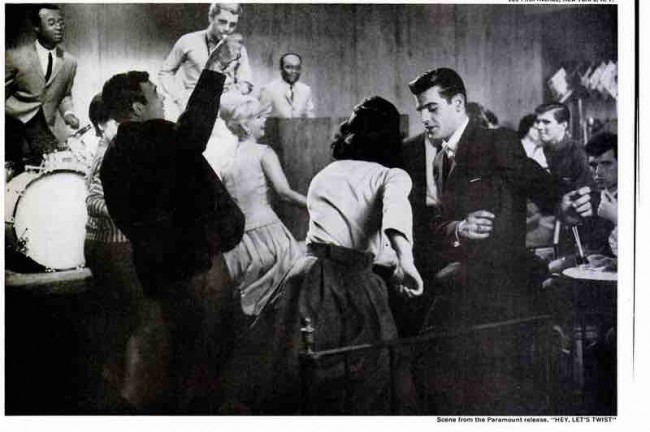
Original ad here.
Posted By: Paul - Tue Jan 24, 2017 -
Comments (7)
Category: Fads, Fashion, Movies, Music, Teenagers, 1960s, Dance

| Who We Are |
|---|
| Alex Boese Alex is the creator and curator of the Museum of Hoaxes. He's also the author of various weird, non-fiction, science-themed books such as Elephants on Acid and Psychedelic Apes. Paul Di Filippo Paul has been paid to put weird ideas into fictional form for over thirty years, in his career as a noted science fiction writer. He has recently begun blogging on many curious topics with three fellow writers at The Inferior 4+1. Contact Us |




